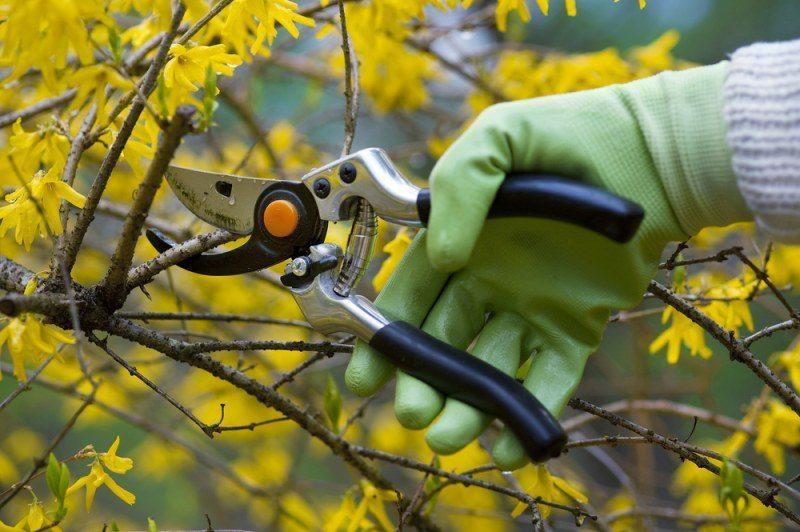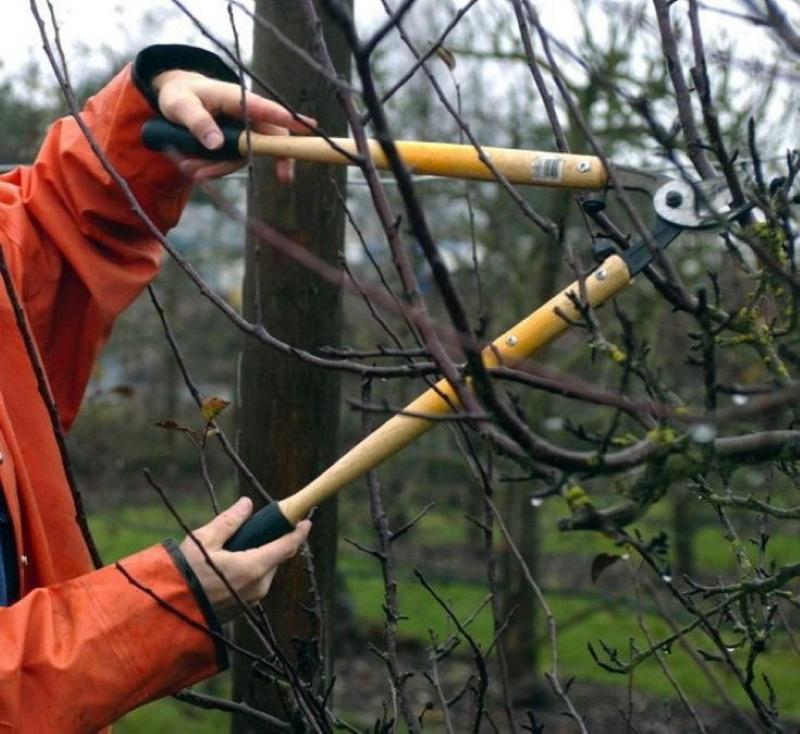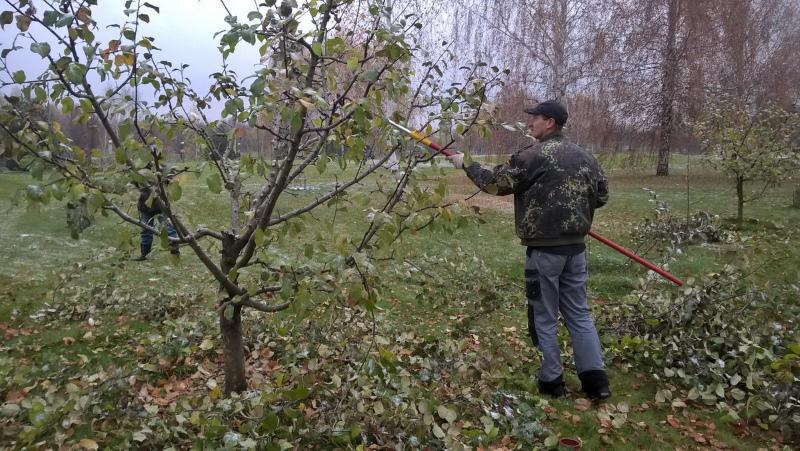Pruning trees and shrubs in the fall - important nuances and timing
 At each site, at least several representatives of fruit and berry crops, as well as ornamental plants, grow. Some are grown in order to have fresh vitamins in the form of fruits and berries, others for beauty and decoration of the site, and still others just for life-giving shade. Whatever the reason, one of the most important things to do is pruning trees and shrubs in the fall. Both cultural and decorative plantings need regulation of their development. Without pruning, they quickly overgrow, stop bearing fruit and bloom, begin to hurt and completely die. Therefore, you cannot neglect this procedure and let the garden take its course.
At each site, at least several representatives of fruit and berry crops, as well as ornamental plants, grow. Some are grown in order to have fresh vitamins in the form of fruits and berries, others for beauty and decoration of the site, and still others just for life-giving shade. Whatever the reason, one of the most important things to do is pruning trees and shrubs in the fall. Both cultural and decorative plantings need regulation of their development. Without pruning, they quickly overgrow, stop bearing fruit and bloom, begin to hurt and completely die. Therefore, you cannot neglect this procedure and let the garden take its course.
When is the best time to prune your garden in autumn

In the fall, they mainly carry out sanitary pruning. You can start to it only after the shrubs and trees enter the dormant period, and their sap flow stops. An earlier haircut can provoke the appearance of young shoots that will not survive the winter. However, it is important to finish pruning at least two weeks before frost. This time is enough for the wounds to be covered with a protective crust.
In the northern regions, it is better to move the garden cut into the spring, especially for young plants.
Pruning trees and shrubs in the fall - basic principles
The goal of an autumn haircut is to remove all dry and diseased branches, regardless of the type of crop. They become a hotbed of infection by fungi, and pests winter successfully under dry bark. It is also necessary to completely cut out tops and branches that grow into the crown or intersect with others. At the same time, thinning of the crown is carried out by removing part of the numerous shoots. This will provide the crown with free access to air and light, which means that trees and bushes will not hurt, and the crop will ripen evenly.
Such are the general rules for autumn pruning. However, each culture has its own nuances that should be considered, for example:
- The pruning of cherries, cherries and plums is best left for the spring. The rest of the trees (apple, pear, apricot and others) can be cut in the fall.

- Raspberries. In the fall, last year's shoots are completely removed from her, leaving only young ones, on which there will be berries in the next season. The exception is repairing varieties. They bear fruit on a young growth, so the raspberry tree is cut out completely.

- Currant. The bush needs periodic rejuvenation. In the fall, part of the shoots older than 5 years is cut into black currants, leaving several young stems instead.For white and red currants, rejuvenation can be carried out a little later, after 7 years.

- Gooseberry. Shoots that are more than 7 years old are subject to complete removal. And also those that give few berries.

- Honeysuckle is edible. When rejuvenating, you cannot touch the young growth, because it will be on it that the ovary will be. Only too old and overgrown bushes can be cut to a stump so that they can be renewed from root growth.

As for the decorative flowering shrubs, they are also cut in the fall, getting rid of damaged and missing branches. Formative pruning is carried out only in species that bloom from mid-summer, which form buds on a young growth. This applies to panicle hydrangea, summer spirea, shrub cinquefoil. The same bushes that bloom in spring on last year's branches, for example, clematis of the first pruning group, should not be touched.